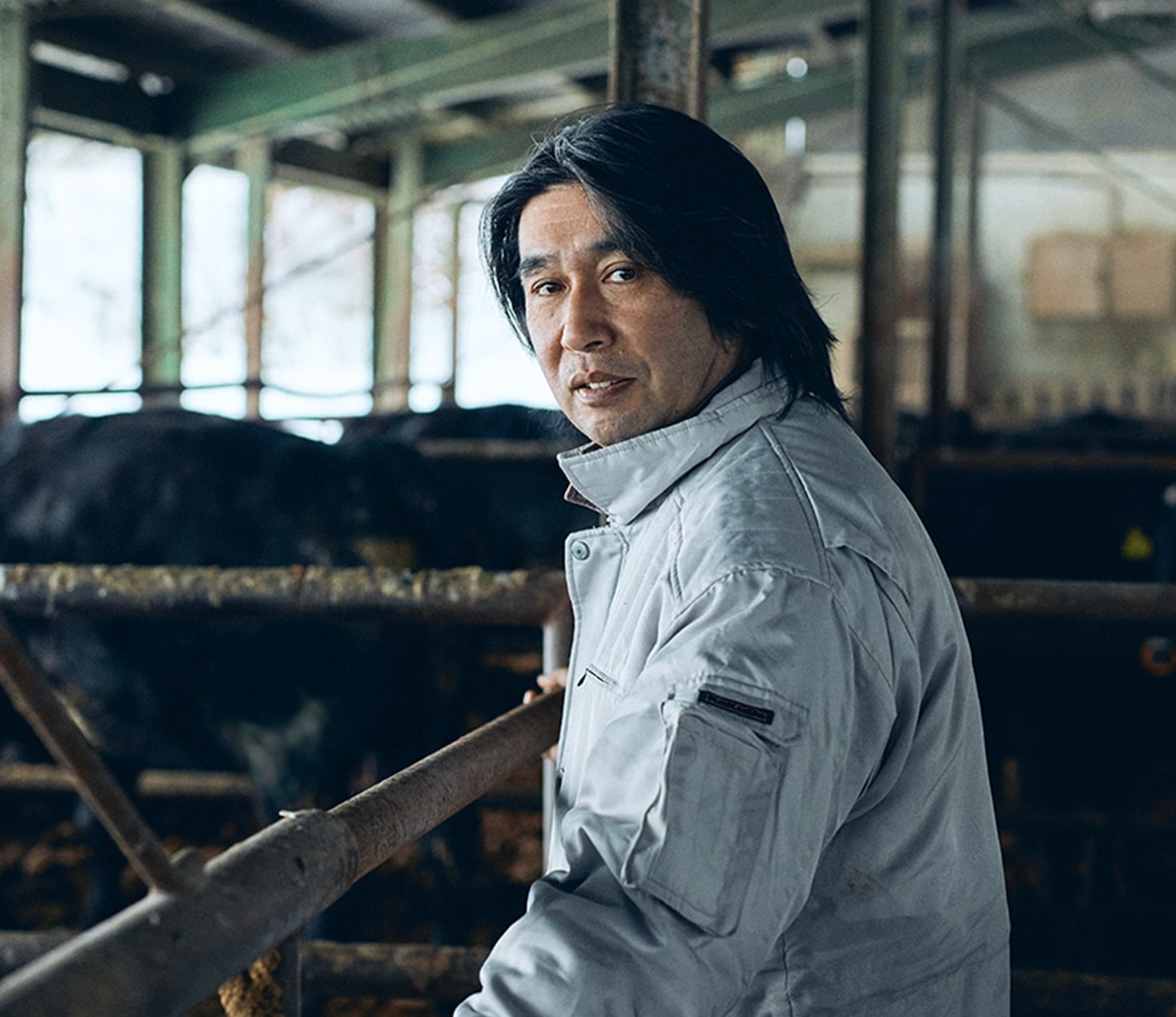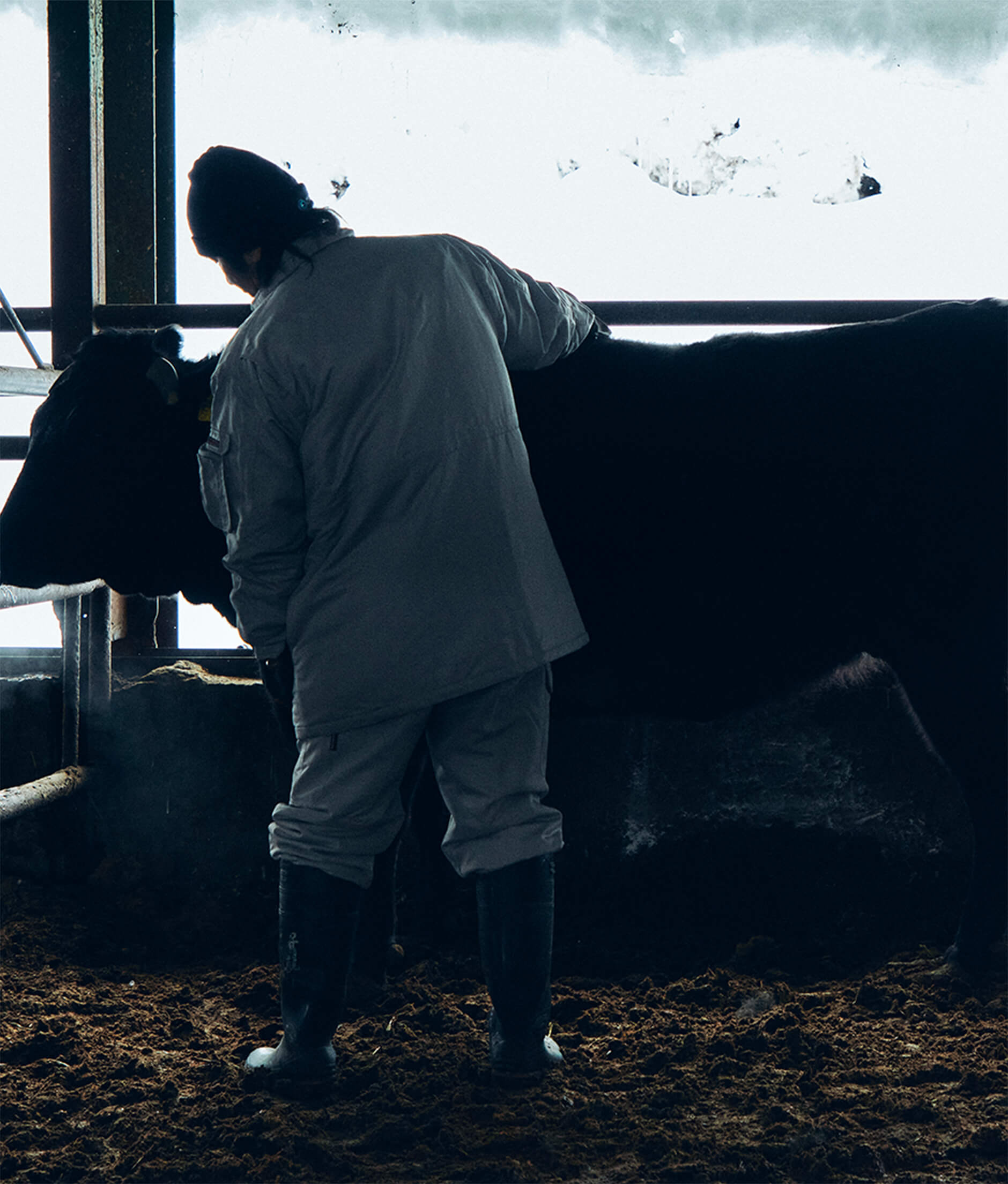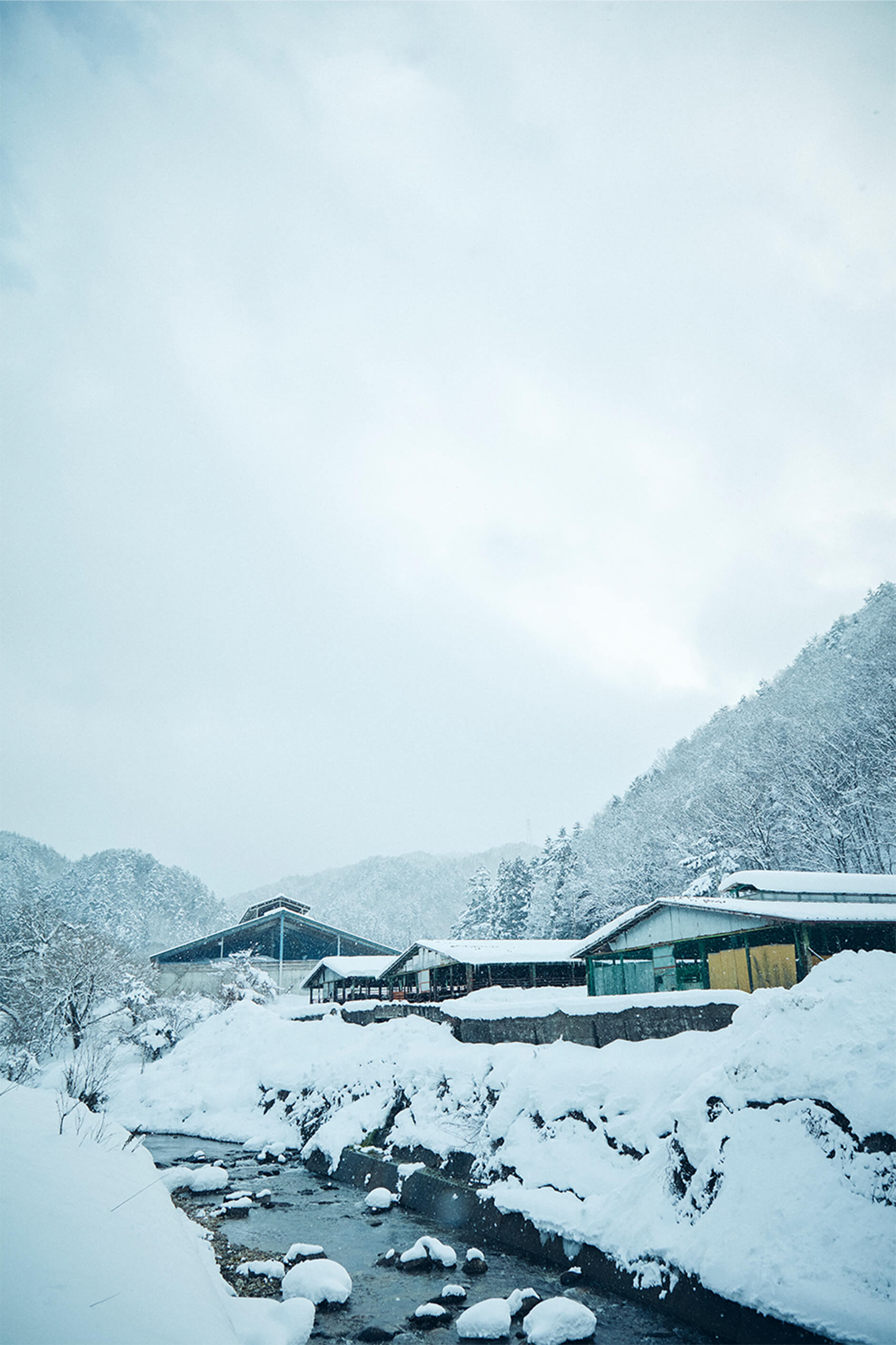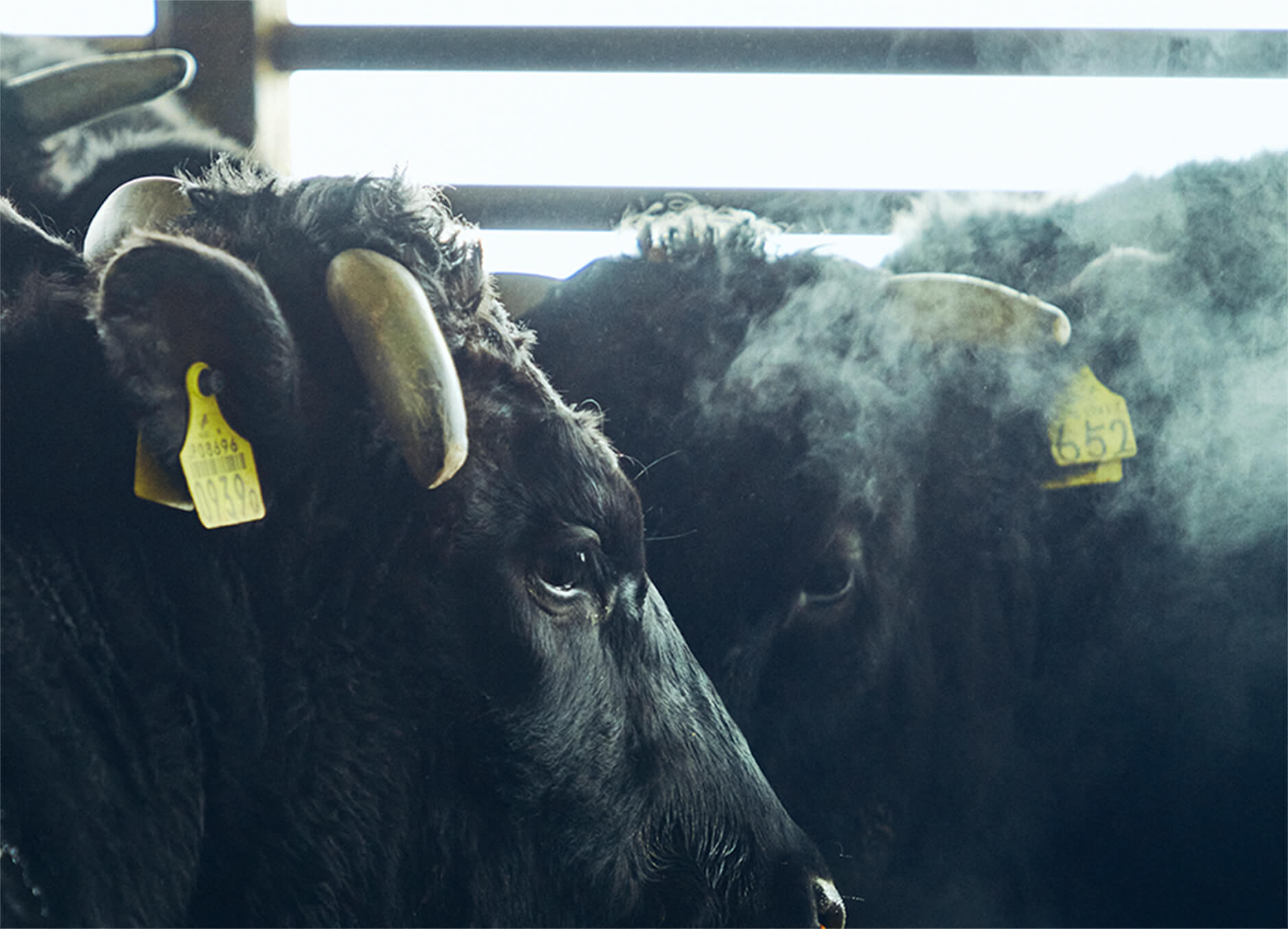
In the Words of a
Japanese Wagyu Producer
Carefully raising each head
of cattle
Hitoshi Kamigaito
Over 50 years ago, Hitoshi Kamigaito's father started beef cattle feeding operations at his cattle farm in Gifu Prefecture. Having taken over the business, Mr. Kamigaito now raises his approximately 120 Japanese Wagyu cattle with attentive care for each. JFOODO visited Mr. Kamigaito to ask how he feeds and fattens his cattle.
Attentive care to the health of all cattle

I put feeder cattle aged eight to ten months into the farm, and fatten them until they are 29 or 30 months old before shipping them out. To increase the body size of the cows as they grow, for the first two months or so I feed them green grass (also called pasture grass) that toughens up their stomachs. After that, I reduce the amount of grass while gradually giving them a mixed feed with a balance of mostly grains like corn, soybean meal, and barley, taking plenty of time, one-and-a-half years, to fatten them up. My barn is in a mountainous area and has about 120 cattle. I carefully pay attention to each and every one to raise them into healthy cattle.

Japanese Wagyu cattle raised on groundwater in the mountains

I raise Japanese Wagyu cattle in Gifu Prefecture, which is basically in the middle of Japan. It is a mountainous prefecture with forests covering 81% of the land. The winters are cold, and my farm gets down to around 15 degrees below zero Celsius in January, but we have a good environment to raise our catttle such as clean air and pure water. My well draws mineral-rich groundwater from the mountains. I have its quality evaluated before giving it to my cattle. Whether it is summer or winter, the groundwater is about the same temperature, so it causes no stress for the cattle drinking it. This environment helps me raise Japanese Wagyu cattle with fine marbling.

Utilizing bark on the floor, a logging by-product, that gives back to the local community

I lay sawdust and bark on the barn's floor. Sawdust is produced from sawing lumber, while bark is the skin of trees. Heavily forested Gifu Prefecture has a thriving forestry industry, so the bark is shaved from trees that were felled in the prefecture. This reduces the burden on the legs of cattle that have gained weight and it absorbs the cattle's manure to make the barn more sanitary, thus mitigating the stress on the cattle. Also, I make compost from old sawdust and bark. It is a way to give back to local farms and an example of how I contribute to creating a recycling-oriented regional community.

